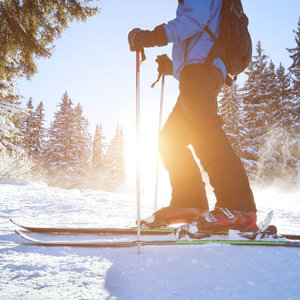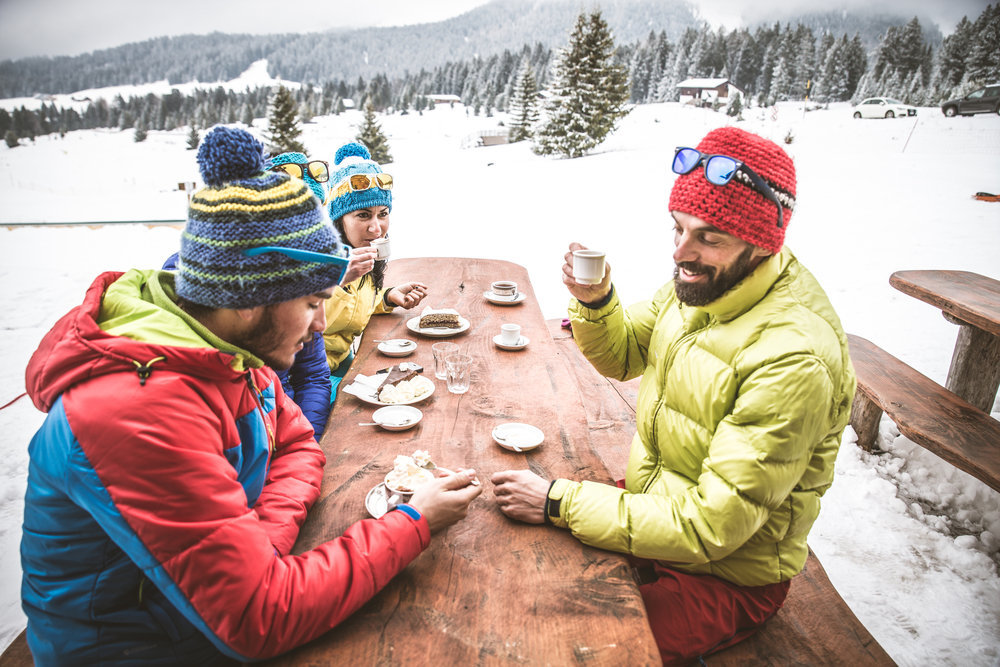
Winter is here and in the coming months an estimated 1.5 million Brits will head off on a skiing holiday. But, regardless of how experienced a skier you are, it is important to take precautions before hitting the slopes. Physiotherapy specialist Physio Med offers its advice and tips on how to prepare for a ski trip and return injury free.
Before Skiing
What are the most common skiing injuries and how can you avoid them?
The whole body is susceptible to injury when skiing but lower body injuries, such as sprains and strains, are most common as leg muscles – such as the quadriceps, hamstrings and calf muscles – bear the brunt of the sport’s repeated twisting and turning movements.
Because most people only ski for one week a year and often don’t prepare properly, lower back injuries and hip, knee and ankle pain are common due to pressure being suddenly applied to muscles that haven’t been used since last year’s trip. The medial ligament and anterior cruciate ligaments in the knee are particularly prone to injury because, although ski boots act as a splint to support the ankle, they redirect forces to the knee.
In the upper body, wrist, shoulder and elbow injuries can occur as a result of falling on the snow or ice.
The same risks also apply if you’re snowboarding. However, because snowboarding boots are softer, less supportive and need strapping to the board, it is easier to injure your ankle if you fall while twisting.
Should you attempt to ski if you’re out of shape?
Ideally, you should try to increase your fitness levels before attempting to ski. Skiing requires lots of energy and the use of all your muscles, so one of the toughest things you can ask your body to do is to go from doing no physical exercise for 51 weeks to skiing several hours a day, every day, for an entire week.
If you attempt to ski while out of shape, you will tire very quickly and increase your risk of suffering a potentially serious ACL injury.
What exercises/routines are best to prepare you physically for a skiing holiday?
To minimise the risks of ski injuries you should do some strength building exercises in the six weeks before your holiday – working on your quadriceps, hamstrings, hip abductors and adductors:
Squats
Your quads (thigh muscles) have to work extremely hard when you’re skiing, so squats will help to build up strength. Stand with your legs shoulder width apart, bend your knees until your thighs are parallel to the floor and your toes are in front of your knees. Gently stand up straight and repeat 20 times.
Squat Jump
Squat jumps help strengthen your glutes (buttocks) as well as your quads, and help you stay pain free when performing turns. Stand with your legs shoulder width apart, bend your knees until your thighs are parallel to the floor and your toes are in front of your knees. Then jump, return to the starting position and repeat four times. After catching your breath, repeat five more times.
Wall squats
This variation on the traditional squat is great for increasing your endurance and helps prevent the burning sensation skiers often feel after a few hours on the slopes. Stand with your back flat against a wall, move into the squat position and remain in that position for as long as you can. When you can’t take any more, return to a standing position and catch your breath. If you can bear it, repeat once more.
Lunges
Lunges help improve your balance. Stand with your feet together, move one leg forward and bend until the front leg forms a right angle with the floor. Try to maintain a straight back. Return to standing, then repeat with the other leg to the front. Repeat ten times with each leg.
The Plank
Planking strengthens the core muscles in your lower back and abs. Begin by lying flat on the floor, raise your hips until only your elbows and toes remain in contact with the floor and your body forms a straight line. Hold for one minute. Catch your breath, then repeat.
A trip to an indoor ski slope is also good preparation and a visit to a Massage Therapist for a sports massage will help your muscles relax, reducing the risk of injury and improving your blood flow and range of movement so you’re in peak shape for your skiing holiday.
While Skiing
Warming up before each ski session is essential to prepare the muscles and help avoid injuries. Warm up your quads, hamstrings and calves by carrying out the following stretches:
The standing hamstring stretch
Put your left foot slightly in front of your right foot with your toes raised. Bend your right knee slightly, keep your left leg straight and lean forward, resting both hands on your right thigh for balance, until you feel light resistance in the back of your leg. Hold for 20 - 30 seconds, then swap legs and repeat five times.
The standing calf stretch
Stand facing a wall and lean against it with your hands. Place your left leg slightly behind your right leg, then bend your right leg while keeping your left leg straight with your heel firmly on the floor. Lean forward until you feel the muscles in the straight leg begin to stretch, then hold for 20 - 30 seconds, swap legs and repeat five times.
Hip adductor stretch
To stretch the group of muscles in your inner thighs, stand with your feet wider than hip width and keep your left leg straight, then bend your right knee so that you are supporting your body weight on the side of the knee. Keep your left foot pointing forward. Hold for 20 - 30 seconds, then swap legs and repeat five times.
You should also stretch and warm up your lower back by standing with your feet hip distance apart and placing both hands on your hips. Gently lean backwards whilst still looking forwards, until you can feel a stretch in your lower back. Hold the stretch for five seconds and repeat 15 times.
Finally, rotate your shoulders and wrists ten times clockwise and ten times anticlockwise.

Should you take a break between ski runs?
Yes, you will definitely need a few breaks to take on fluids and keep hydrated. You should also break up the types of runs you are doing - try to vary the grades of the slopes you are skiing on to avoid overworking your muscles. Sticking to advanced runs all day is not advisable unless you’re an experienced skier.
And remember - it’s fine to take a day off during a skiing holiday! People want to cram as much skiing as possible into their break but having a rest day halfway through will give your muscles chance to relax and help them prepare for more activity later.
After Skiing
What exercises/stretches should you do to warm down?
The best way to warm down is to move to an easier or slower slope. If you’re an advanced skier who has been on technically difficult slopes all day, switch to the beginners’ slope; if you’re already on the beginners’ slope, simply reduce your speed for your final runs - this will allow your body to cool down gradually and prevent any last-minute injuries.
Then, once you’re out of your skiing gear, repeat the same stretches you carried out earlier and you’ll be ready to go again the next day.
Finally, once your ski trip is over, head for another sports massage to help your muscles recover completely… and let the countdown to next year’s trip start all over again!
